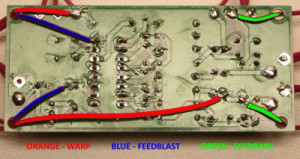Available as a kit or completed module this sucker is deep with features.check it out at Hexinverter.net
The ACXsynth MIDI2CV Eurorack module is an 8HP, 4 channel CV/Gate interface with a robust feature set you can build yourself!
The original circuit and firmware were designed by the talented Alain Coupel of ACXsynth. His design is used here with permission. Dmitry, a forum member, took it upon himself to update the firmware with a slew of new and exciting features!
FEATURES
- 12bit DACs with high quality Intersil opamps for great CV accuracy
- Monophonic mode offers full control of one voice (mod, pitch wheel, etc.) as well as sequencer control (start/stop, reset, sync)
- Split and duophonic modes accessible through advanced features
- Sync output emits MIDI clock pulses for driving sequencers
- MIDI channel auto-learn at startup means no configuration if only basic functionality is desired




